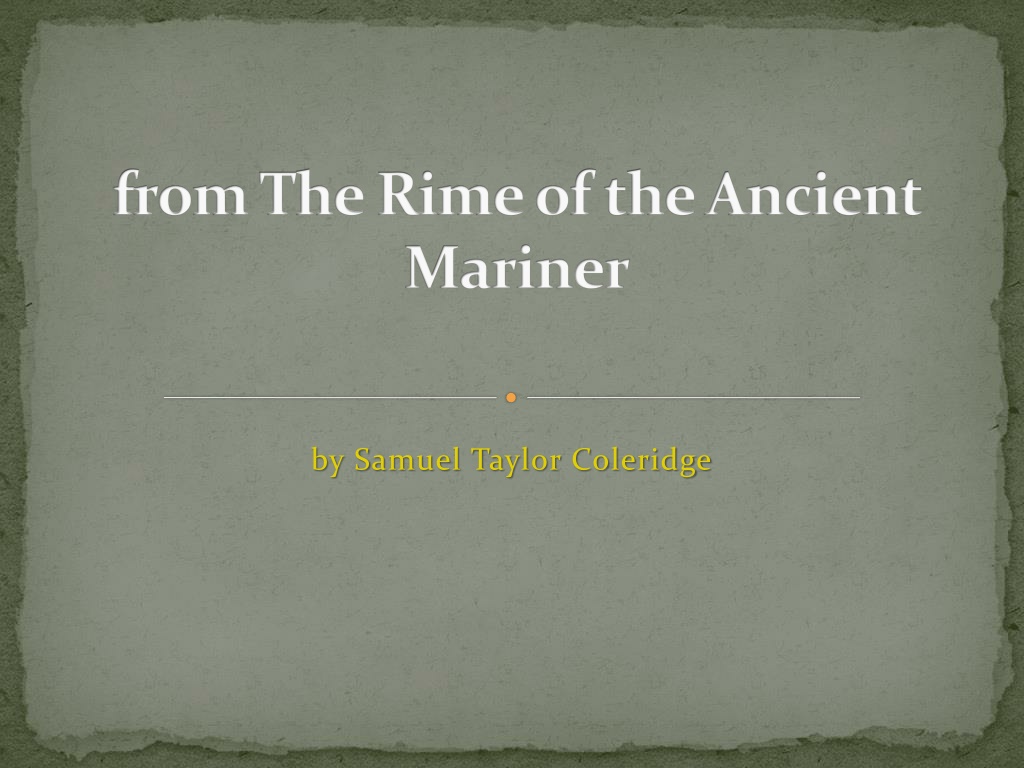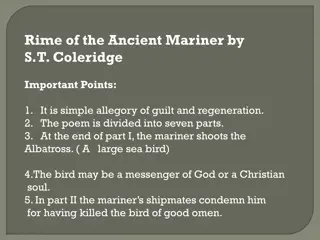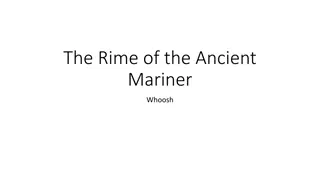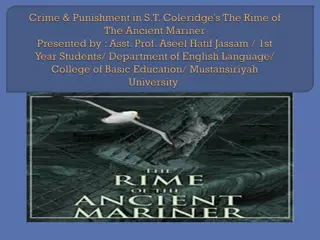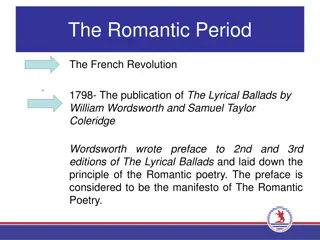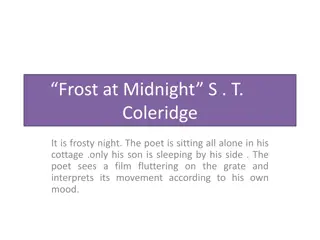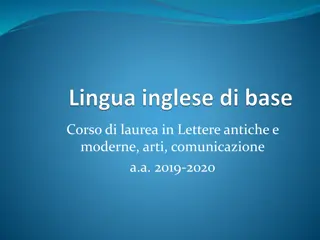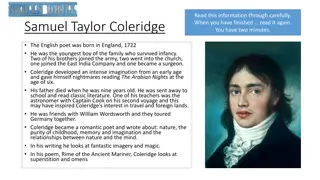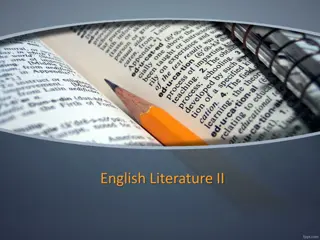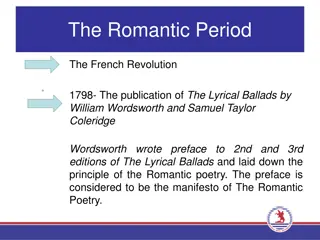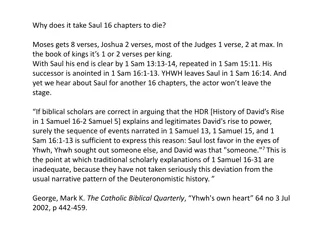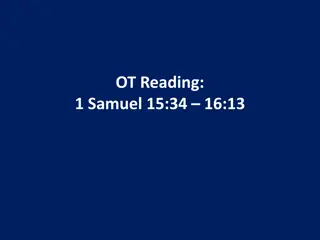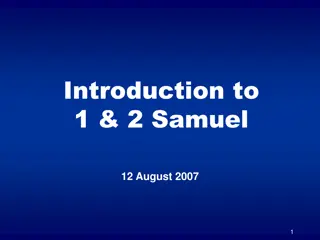The Rime of the Ancient Mariner by Samuel Taylor Coleridge Explained
The Rime of the Ancient Mariner, a classic poem by Samuel Taylor Coleridge, tells the tale of a sailor who shoots an albatross, bringing a curse upon his ship. The poem depicts the consequences of his actions, the stagnant ship, thirsty sailors, and the desolate sea. Through detailed stanzas, the poet conveys themes of nature, guilt, and redemption.
Download Presentation

Please find below an Image/Link to download the presentation.
The content on the website is provided AS IS for your information and personal use only. It may not be sold, licensed, or shared on other websites without obtaining consent from the author. Download presentation by click this link. If you encounter any issues during the download, it is possible that the publisher has removed the file from their server.
E N D
Presentation Transcript
from The Rime of the Ancient Mariner by Samuel Taylor Coleridge
The poem is about a sailor who shoots an albatross, (a bird which flies over ocean) and this brings a curse upon the ship . These lines follow the incident of the shooting:
THE POEM The fair breeze blew, the white foam flew, The furrow followed free; We were the first that ever burst Into that silent sea.
Down dropt the breeze, the sails dropt down, Twas sad as sad could be; And we did speak only to break The silence of the sea!
All in a hot and copper sky, The bloody Sun, at noon, Right up above the mast did stand, No bigger than the Moon.
Day after day, day after day, We stuck, nor breath nor motion; As idle as a painted ship Upon a painted ocean.
Water, water, everywhere, And all the boards did shrink; Water, water, everywhere, Nor any drop to drink.
Coleridge is a Romantic poet. These lines are taken from a long poem. The killing of the albatross has brought a curse upon the ship. The above lines show how the ship is not moving and the sailors are thirsty, and how the killing of the bird has brought death to the ship.
Meaning by stanza Stanza 1: The poet is describing how the ship enters the Pacific Ocean. The breeze is is fine, the foam is flying, the cut made by the ship is like a furrow( a long cut made in the ground by a plough) to suggest speed. The sailors are the first to enter this silent sea, but everything seems fine.
Stanza 2: In this stanza, the breeze has become weaker, the sails are down, the sea is silent, and everything has changed. Everybody now is sad. The ship is still, because there is no wind to move it, that s why the sails are dropped down.
Stanza 3: The poet is describing the weather in order to show how silent and still the sea is. The sky is like copper (reddish brown). It is noon, and the sun is like the colourof blood, it stood in the middle of the sky looking like the moon, i.e. small, because of mist. The sailors can t see well. These are the signs of the curse; the sky and the sun are angry (red).
Stanza 4: The ship is still in the middle of the sea, while time goes on. There is monotony. The ship is stuck, unable to move, and it looks as still as a ship in a picture.
Stanza 5: The poet repeats the word water to show how vast the sea is, yet the sailors are thirsty, and the boards of the ship have shrunk because of the salty water. This stanza suggests that the sailors are going to die of thirst.
